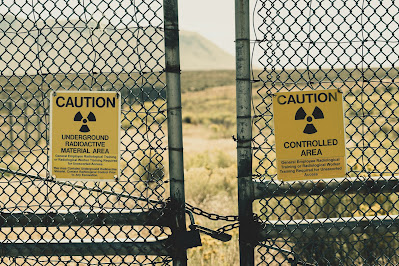Featured
- Get link
- X
- Other Apps
Why don't we tow icebergs to get water?
Why don't we tow icebergs to get water?
Towing icebergs to arid regions to provide water is an idea that has been considered for decades. While it is technically possible to tow icebergs, there are several challenges and concerns that need to be addressed before it can become a viable solution for water scarcity.
Feasibility:
Towing large icebergs over long distances has never been performed, and many questions remain about the feasibility of undertaking such operations. Icebergs are routinely towed short distances to avoid collisions with offshore oil and gas platforms, but these are much smaller than the icebergs needed to alleviate water stress. To supply the basic drinking water demand of an entire population for one full year, an iceberg would need to be around 700 meters long and 250 meters thick at the beginning of the tow. However, higher towing speeds can cause vibrations from ocean waves that fracture the rigid ice and cause it to break apart. Insulating the iceberg and slowing melting could make it more towable.
Size and Melting:
Whether an iceberg will survive the journey depends not just on its size and the distance it will travel but also the water and air temperature, the amount of wind, the ocean currents through which it is pulled, and the salinity of the water surrounding it. The water temperature in the destination area can be much warmer than the iceberg, causing it to melt before it reaches its destination. An iceberg this size would only require ~ 1 to 2 vessels to move and would deliver ~ 2.4 million liters of water. Placing an insulating material around the same iceberg to inhibit wave-induced erosion results in 4.5 billion liters of deliverable water.
Environmental Concerns:
There are concerns about the environmental impact of towing icebergs, such as the release of cold freshwater into warmer ocean waters. Changes in temperature affect aquatic life. These concerns would need to be addressed before long-distance towing could be implemented.
Cost:
Towing icebergs can be expensive, with a single iceberg-towing vessel costing around $75,000 a day. Towing a massive iceberg might require several ships for months at a time, making it a costly endeavor.
Despite these challenges, researchers continue to explore the potential of towing icebergs to arid regions as a solution to water scarcity. However, more research and technological advancements are needed to address the feasibility, environmental concerns, and costs associated with this approach.
There are other solutions to water scarcity that are more practical and cost-effective. For example, rainwater harvesting and recycled wastewater also allow to reduce scarcity and ease pressures on groundwater and other natural water bodies. Groundwater recharge and storage, water conservation, and improving irrigation efficiency are other solutions that can help alleviate water stress. Desalination is another method that can actually increase the amount of freshwater on Earth. It involves removing dissolved salt and minerals from seawater or saline groundwater. An advantage of this approach is that there is a virtually unlimited supply of saltwater.
Education is critical to solve the water crisis. In fact, in order to cope with future water scarcity, changing the face of this crisis involves education to motivate new behaviors. Coping with the coming era of water scarcity will require major overhaul of all forms of consumption, from individual use to the supply chains of major corporations. Some regions led by India, Australia, and the Southwest U.S., are already facing the freshwater crisis. The most critical task is making sure the problem is much better understood worldwide.
In conclusion, while towing icebergs to arid regions to provide water is an interesting idea, it is not a practical solution to water scarcity due to the many challenges and concerns that need to be addressed. There are other more practical and cost-effective solutions that can help alleviate water stress.
Citations:
[1] https://www.nature.com/articles/s41598-022-26952-y
[2] https://bigthink.com/the-present/tow-icebergs-freshwater/
[3] https://dww.show/this-iceberg-idea-already-crazy-in-1825-may-be-the-future-of-water/
[4] https://www.circleofblue.org/2010/world/experts-name-the-top-19-solutions-to-the-global-freshwater-crisis/
[5] https://www.researchgate.net/post/What-will-be-the-impact-of-towing-icebergs-from-Antarctica-to-UAE
[6] https://www.whoi.edu/oceanus/feature/can-icebergs-be-towed-to-water-starved-cities/
[7] https://sciencetrends.com/towing-icebergs-to-provide-drinking-water-to-regions-suffering-from-drought/
[8] https://solarimpulse.com/water-scarcity-solutions
[9] https://geographical.co.uk/science-environment/iceberg-towing-a-bizarre-solution-to-the-freshwater-crisis
[10] https://quenchwater.com/blog/solutions-to-water-scarcity/
[11] https://www.theguardian.com/environment/2017/may/05/could-towing-icebergs-to-hot-places-solve-the-worlds-water-shortage
[12] https://bio.libretexts.org/Bookshelves/Ecology/Environmental_Science_(Ha_and_Schleiger)/04%3A_Humans_and_the_Environment/4.02%3A_Water_Resources/4.2.03%3A_Water_Scarcity_and_Solutions
[13] https://www.theatlantic.com/technology/archive/2011/08/the-many-failures-and-few-successes-of-zany-iceberg-towing-schemes/243364/
[14] https://greentumble.com/alternative-solutions-for-water-shortage
[15] https://www.bloomberg.com/news/features/2019-06-06/towing-an-iceberg-one-captain-s-plan-to-bring-drinking-water-to-4-million-people
[16] https://www.worldwildlife.org/projects/managing-water-scarcity
[17] https://www.bbc.com/future/article/20180918-the-outrageous-plan-to-haul-icebergs-to-africa
[18] https://worldwaterreserve.com/water-scarcity-solutions-for-the-21st-century/
[19] https://www.newsweek.com/americans-running-out-water-towering-iceberg-could-answer-1760627
[20] https://earth.org/solutions-to-water-scarcity/
Popular Posts

Why are Memories Forgotten?
- Get link
- X
- Other Apps

How is the Colour of a Lobster Determined?
- Get link
- X
- Other Apps

Can Sound Waves Solve Plastic Pollution?
- Get link
- X
- Other Apps

Can Animals Recognise Human Faces?
- Get link
- X
- Other Apps

Is the Earth Spinning Faster?
- Get link
- X
- Other Apps

Do plants sleep? The surprising science of sleep in the plant kingdom
- Get link
- X
- Other Apps

Can Bad Times Actually Improve Your Life? Surprising Benefits of Adversity
- Get link
- X
- Other Apps

Can Brain Implants Make You More Powerful?
- Get link
- X
- Other Apps

The Future and Potential of Nuclear Batteries
- Get link
- X
- Other Apps

Could Sun Blocking be a Strategy to Combat Global Warming?
- Get link
- X
- Other Apps
Popular Posts

Why are Memories Forgotten?
- Get link
- X
- Other Apps

How is the Colour of a Lobster Determined?
- Get link
- X
- Other Apps

Can Sound Waves Solve Plastic Pollution?
- Get link
- X
- Other Apps

Can Animals Recognise Human Faces?
- Get link
- X
- Other Apps

Comments
Post a Comment